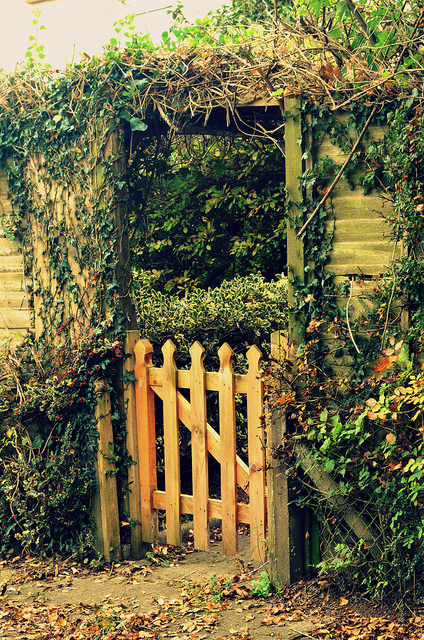Sipping organic vino on my porch under the afternoon sun while wearing a glorious farm hat doesn’t make me a poor farmer—it makes me an intelligent one with no respect for unnecessary busy work.
Preamble: If you are unaware, permaculture means “permanent agriculture” or “permanent culture,” where sustainable and autonomous agricultural production is the focus, and looking beyond our lifetime is the common goal. Cue Bill Nye the Science Guy voiceover: Now you know.
Here are David Holmgren’s 12 principles of permaculture —romanced by yours truly.
In asterisks, legendary Bill Mollison remarks are embraced.
1. Observe and Interact
Be curious and conscious of what is occurring. Invest time in being the witness and learn from your environment. Be silly and fun—think like a tree, or a honeybee for insight.
2. Catch and store energy
Identify energy sources (e.g. wind, water, solar) and then hoard them like a greedy, kind, green human—be an energy collector, not an energy dumpster!
3. Obtain a yield
Fancy a system with more yes’ than no’s. Monoculture operations function with the assumption that crop yield = yield.
We do not. Our understanding of yield expands to include desirable resources and functions.
*The yield for a given space is theoretically unlimited.
Permaculture employs a holistic view: yield = outputs – inputs, respecting the importance of soil health, quality of life, diversity of species, time/labor, air quality and other resources grossly sacrificed and forgotten in large mono-operations.
4. Apply self-regulation and accept +/- feedback
Hidden Permaculturists’ secret: we are really just lazy farmers—we want everything working for us (with us…but for us).
To bask in such afternoon luxuries as vino and porch chillin’, we design closed loop systems that mimic patterns found in nature and will take care of themselves. Our designs strive for maximum autonomy.
Hot tip: sexily describe this as ‘biomimicry’ and make your sapiosexual love interests swoon.
If something is prospering, even by accident—do more of that shit.
If an element isn’t working as you suspected—accept the fact and switch your approach.
Insanity is doing the same thing over and over again and expecting different results. ~ Albert Einstein
5. Use and value renewable resources and services
Duh. Think smart; think sustainability. You know this stuff. Biological resources (e.g. biogas, diversity) are cool —don’t play stupid.
6. Produce no waste
Weave closed loop systems so the “waste” of one cycle flows to fuel another.
Everything is either a waste or a resource, depending on the quality of our understanding.
*Every problem is a solution (for something else).
Be inventive! Even plastic has function.
7. Design from patterns to details
Set up a pattern, a maddeningly brilliant framework, proven to work through the test of time and evolution (sprinkled with your creative flare) and then trust life to unravel the details.
8. Integrate rather than segregate
Teamwork.
When everything functions as a cohesive unit, we are creating less work for ourselves. All elements are integral to the whole and energy constantly flows between resources.
*Work with nature, not against it
9. Use small and slow solutions
Forget quick fixes and just-for-now problem solving—so basically everything our culture has taught us about how to approach inevitable complications we will face.
Implement solutions that attempt to correct problems from their root.
Ask: Is this sustainable? Does this approach reflect long-term forward thinking? Am I responding to the symptom or the cause of this issue?
10. Use and value diversity
It’s just the same reason you don’t fornicate with your cousin—it messes with the diversity of genes and increases the risk of complications. Low diversity = high risk.
Diversity is our greatest biological resource and the simplest way to ensure a yield—so what if one plant isn’t thriving? You have ‘x’ number of others producing.
11. Use edges and value the marginal
Boundaries between different eco-zones (e.g. forest/grassland, land/water, air/land) are habitat magnets and amp up our diversity quotient like crazy. Knowing this, we increase the surface area of these boundaries.
Refer to my article about maximizing edge.
12. Creatively use and respond to change
Things rarely go how you want or expect them to—respond accordingly. Decode the information that arises from these changes. Where there is destruction, there is room for growth!
*Make the least change for the greatest possible effect.
There you have it folks—if this sparked your interests in becoming a perma-nerd: get out there and take a design course or research to your pleasure.
Signing off with this goodness:
Occupy yourself, smile, grow your own food, eat your fucking veggies and embody the real meaning of rebellion.
Love elephant and want to go steady?
Sign up for our (curated) daily and weekly newsletters!
Editor: Emily Bartran
Photo: AisforAmy91/Flickr







Read 0 comments and reply